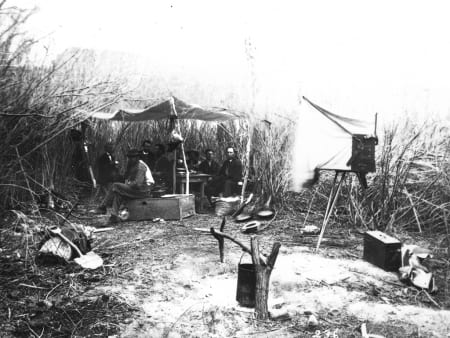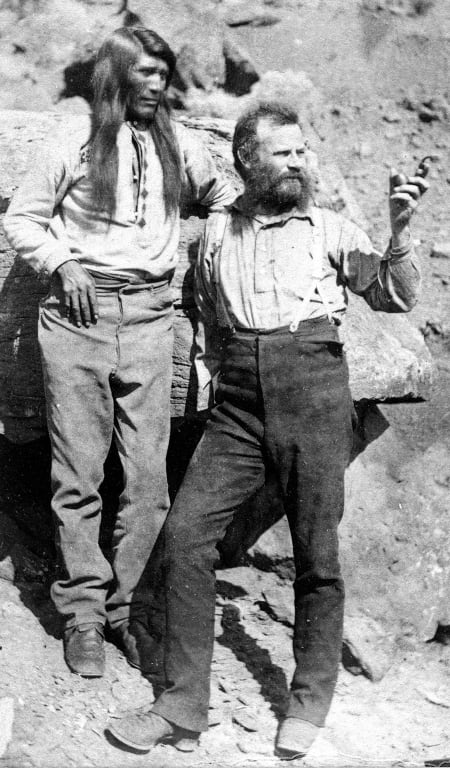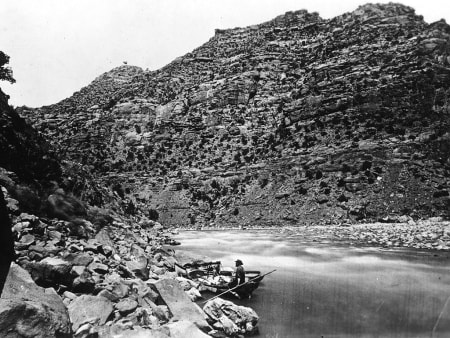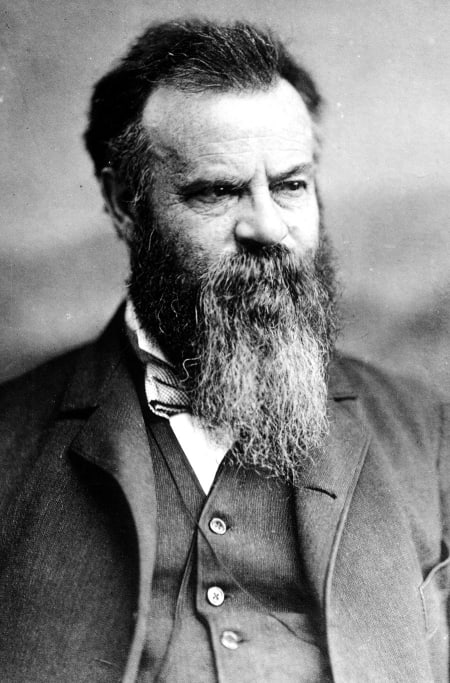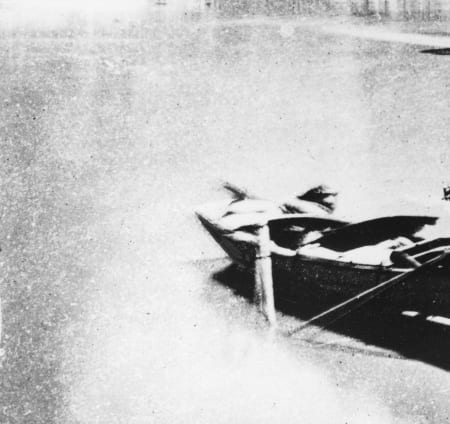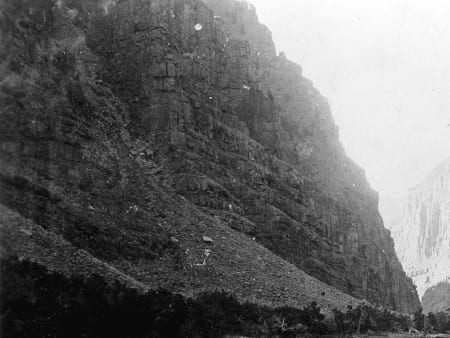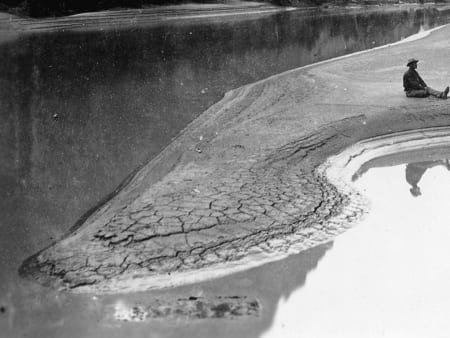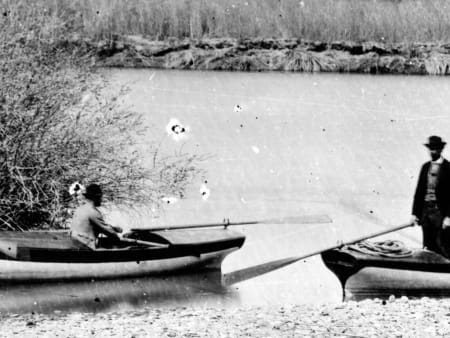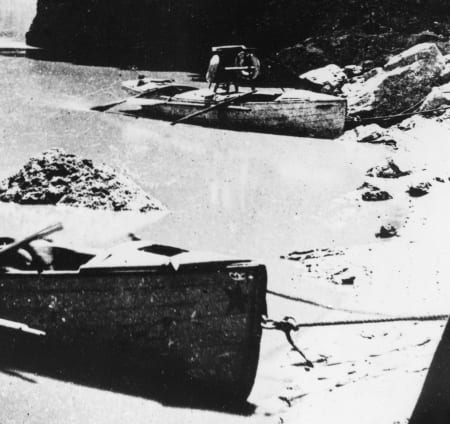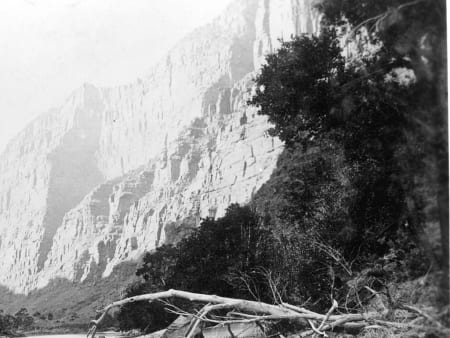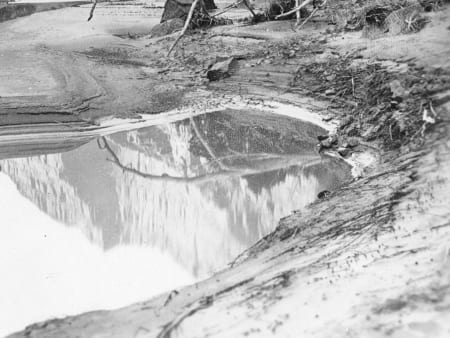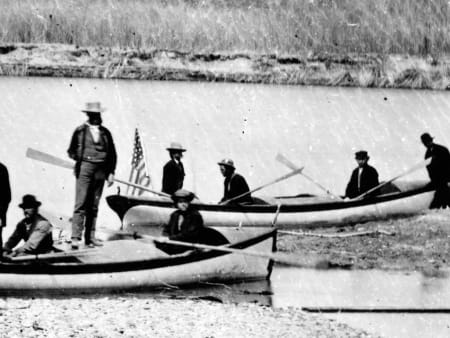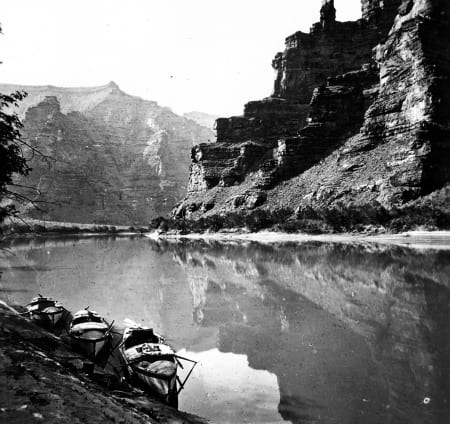o one was waiting for John Wesley Powell when he and his fellow explorers emerged from the Grand Canyon 150 years ago this week.Their historic Colorado River expedition ended with great relief but little fanfare, as their two remaining boats came ashore at the mouth of the Virgin River in the young state of Nevada.
The first people Powell and company encountered as they arrived at the end of their three-month journey were a Mormon fisherman, his two sons and their American Indian companion.
Powell would later describe the encounter in his now-famous account of the expedition: “As we come near, the men seem far less surprised to see us than we do to see them."
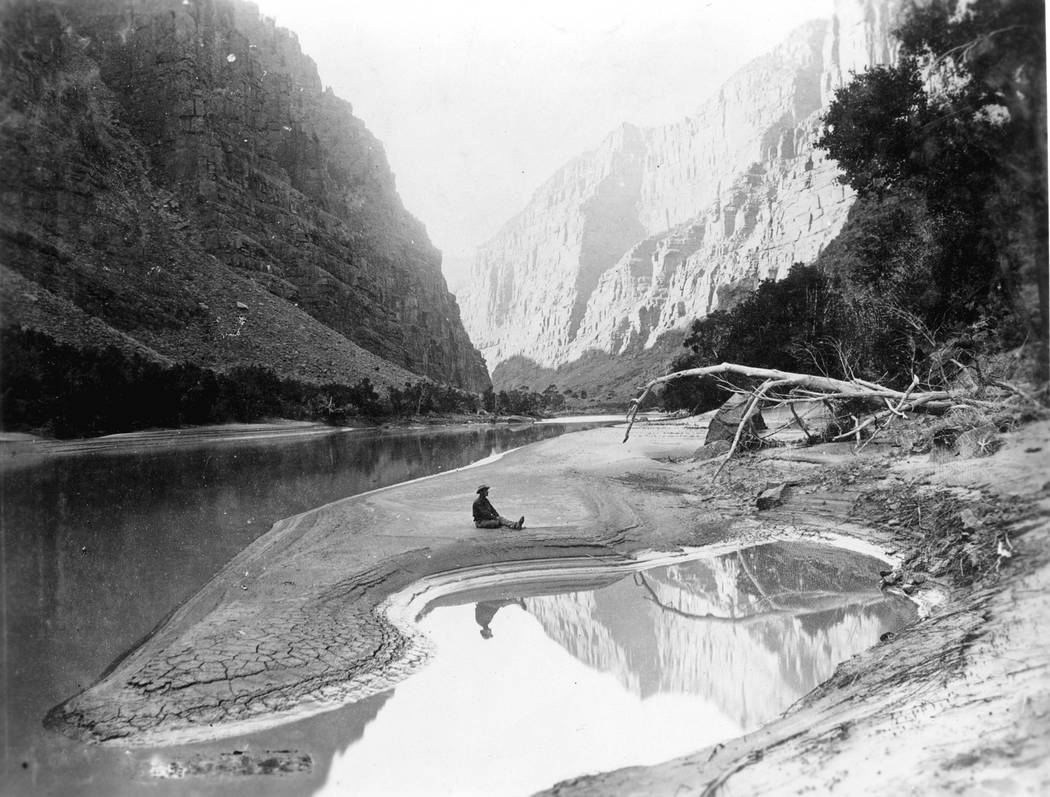
"They evidently know who we are, and, on talking with them, they tell us that we have been reported lost long ago, and that some weeks before, a messenger had been sent from Salt Lake City with instructions for them to watch for any fragments or relics of our party that might drift down the stream.”
Several historical groups and government agencies, including the U.S. Geological Survey, have been marking the 150th anniversary of the expedition with special events and re-enactments along its path from Green River, Wyoming, to a spot now covered by Lake Mead about 45 miles east of Las Vegas.
A group from the University of Wyoming even launched a Twitter account in Powell’s name, tweeting entries from the explorer’s journal as they retraced his path down the Green and Colorado Rivers in boats of their own.
Historian Mark Hall-Patton considers the Powell Expedition a feat worth celebrating.
“They filled in a piece of the map of the Southwest,” the Clark County Museum administrator said. “In the post Civil War years, one of the last great areas that really had not been explored was the Grand Canyon and the Colorado River. What were you going to see? Could you do it? This was a real question mark.”

‘An eventful trip’
The journey began on May 24, 1869, when 10 men pushed off down the Green River in wooden boats loaded with provisions and scientific instruments.
Leading the team of surveyors, soldiers, hunters and mountain men was Powell, a major in the Union Army who had lost his right arm at the Battle of Shiloh.
“It was an eventful trip, of course,” said historian Dennis McBride, director of the Nevada State Museum in Las Vegas. “They started with four boats and lost one of them almost right away.”

In an excerpt from “Exploration of the
Colorado River of the West and Its Tributaries,”
John Wesley Powell describes the feeling of safely emerging from the Grand Canyon on Aug. 29, 1869. The following day, the expedition’s remaining two boats would reach their final destination at the mouth of the Virgin River in Nevada.
“Tonight we camp on the left bank, in a mesquite thicket.
The relief from danger, and the joy of success, are great. When he who has been chained by wounds to a hospital cot, until his canvas tent seems like a dungeon cell, until the groans of those who lie about, tortured with probe and knife, are piled up, a weight of horror on his ears that he cannot throw off, cannot forget, and until the stench of festering wounds and anaesthetic drugs has filled the air with its loathsome (burden), at last goes out into the open field, what a world he sees! How beautiful the sky; how bright the sunshine; what ‘floods of delirious music’ pour from the throats of birds; how sweet the fragrance of earth, and tree, and blossom! The first hour of convalescent freedom seems rich recompense for all pain, gloom, terror.
Something like this are the feelings we experience tonight. Ever before us has been an unknown danger, heavier than immediate peril. Every waking hour passed in the Grand Canyon has been one of toil. We have watched with deep solicitude the steady disappearance of our scant supply of rations, and from time to time have seen the river snatch a portion of the little left, while we were ahungered. And danger and toil were endured in those gloomy depths, where ofttimes the clouds hid the sky by day, and (but) a narrow zone of stars could be seen at night. Only during the few hours of deep sleep, consequent on hard labor, has the roar of the waters been hushed.
Now the danger is over; now the toil has ceased; now the gloom has disappeared; now the firmament is bounded only by the horizon; and what a vast expanse of constellations can be seen!
The river rolls by us in silent majesty; the quiet of the camp is sweet; our joy is almost (ecstasy).”
After two hard months on the Green, the explorers finally reached the Colorado on July 21. By then, the original 10 has shrunk to nine, with Frank Goodman leaving the expedition two weeks earlier to settle in Utah after telling Powell “that he has seen danger enough.”
“I don’t think people realize just how absolutely wild and crazy it was to get in a few boats and go down the Colorado River,” McBride said. There were no roads, no settlements, no hope of rescue. Once they entered the Grand Canyon, they were entirely on their own.
The expedition’s second and final defection came on Aug. 28, just two days before the group reached its destination.
Short on supplies and weary from danger, William Dunn, Oramel Howland and his brother Seneca Howland decided to walk out of the canyon rather than face another day on the river.
The three men were never seen or heard from again.
Their point of departure came to be known as Separation Canyon. A bronze plaque, accessible only by boat, now marks the spot on the cliff wall above the Colorado, less than 80 river miles southeast of where the expedition finally ended.
Considering what the men had been through, it’s amazing Powell was able to hold the expedition together as long as he did, Hall-Patton said.
“It’s a very difficult thing when you are constantly facing the unknown. You’ve already gone through rapids that have overturned your boats and destroyed your equipment and made you lose half of your food and lose an entire boat, and around the next bend, it could be even worse,” he said. “How do you keep going in the face of that?”
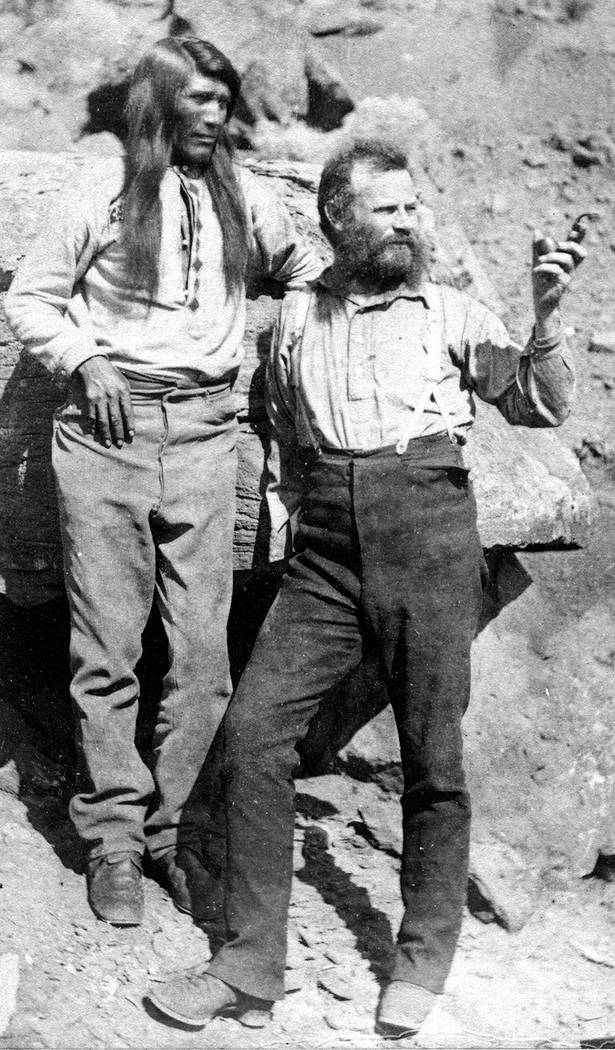
Greetings from St. Thomas
But Powell and his remaining men did keep going.
After abandoning the smallest of the three boats, they rejoined the swift-moving Colorado and floated out of the Grand Canyon at noon the next day.
Powell later described in florid detail the relief and elation they felt when they camped that night in a mesquite thicket, safely downstream from the worst of what the river had to offer.
“Every waking hour passed in the Grand (Canyon) has been one of toil. We have watched with deep solicitude the steady disappearance of our scant supply of rations, and from time to time have seen the river snatch a portion of the little left, while we were ahungered,” he wrote. “Now the danger is over; now the toil has ceased; now the gloom has disappeared; now the firmament is bounded only by the horizon; and what a vast expanse of constellations can be seen! The river rolls by us in silent majesty; the quiet of the camp is sweet; our joy is almost (ecstasy).”
As Hall-Patton put it: “You can see he was little happy to get off the river.”
By early afternoon of the next day, Aug. 30, 1869, the six explorers reached the mouth of the Virgin and met up with the bewildered fishing party that thought they were dead.
They pitched the expedition’s final camp on the Nevada shore, as they awaited word from the messenger they sent to the nearest town, the Mormon settlement of St. Thomas, about 20 miles away.
The only rations they had left were 10 pounds of flour, 15 pounds of dried apples and about 70 pounds of coffee.
According to Powell, the bishop of St. Thomas arrived at their camp the following evening with a wagon filled with melons and “many other little luxuries.”
Powell and his brother, Walter, left with the bishop the next morning, eventually making their way over land to St. Thomas, Salt Lake City and then back East.
The last four members of his crew — John Sumner, William Robert Wesley Hawkins, Andrew Hall and George Bradley — stocked up on provisions, climbed back into the two remaining boats and continued south on the Colorado.
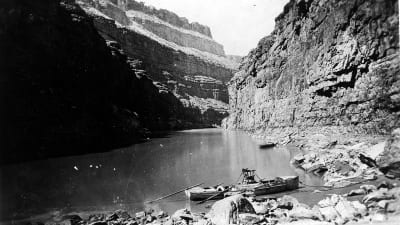
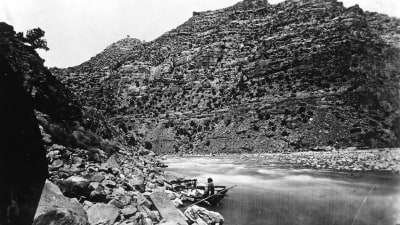
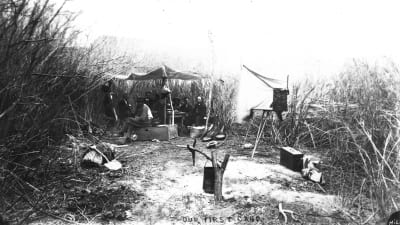
Photos from John Wesley Powell’s second expedition on the Green and Colorado rivers in 1871. From left, Powell’s armchair strapped to a boat in Marble Canyon on the Colorado River; the Canyon of Desolation on the Green River; and the first camp of the expedition on the Green River in Wyoming on May 4, 1871.
A feat still felt
Powell would go on to plan and carry out three more Colorado River expeditions before publishing his account of his journeys in 1875 to national excitement and acclaim. Hall-Patton said “Exploration of the Colorado River of the West and Its Tributaries” was not like other government reports, and it quickly became a bestseller.
A state historical marker at Lake Mead’s Echo Bay now commemorates the expedition’s successful completion. The actual spot where Powell and company came ashore has been lost to the silty bottom of the lake’s Overton Arm.
“It’s under water,” Hall-Patton said. “Not a lot of people are going to step foot there now.”
Lake Mead swallowed St. Thomas, too, but the impact of Powell’s feat is still being felt today.
After all, McBride said, mapping the river was a necessary first step toward taming it. “It paved the way for Las Vegas, Boulder City and all the dams up and down the river,” he said.
“It did a lot of things,” Hall-Patton added. “It filled in parts of our maps. It filled in parts of our heritage. It filled in geology, ethnography, all of that. It also made us aware of water in the West. This was an amazing effort.”



